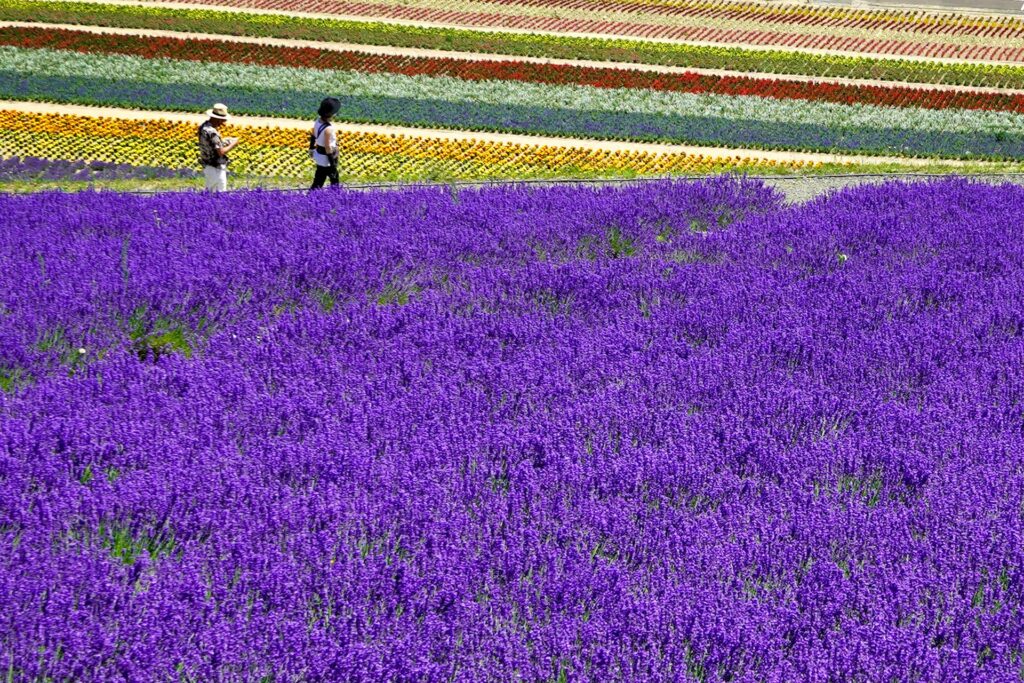
Planning a trip to Hokkaido, a land of vast landscapes, delicious cuisine, and breathtaking views? You might be wondering, "Where should I go? What should I eat? What kind of experiences can I have?"
This article is here to answer all your questions and resolve any uncertainties. As a professional blogger, I've carefully selected the "Top 10 Things to Do in Hokkaido" and will explain them thoroughly. From classic spots to insider tips and seasonal attractions, this guide is packed with concrete, useful information to make your Hokkaido trip an unforgettable memory.

1. Immerse Yourself in Hokkaido's Grand Nature! Must-Visit Scenic Spots
1-1. Furano & Biei Hills: Colorful Flower Carpets and Majestic Panoramas
1-1-1. Farm Tomita's Lavender Fields and Shikisai-no-Oka
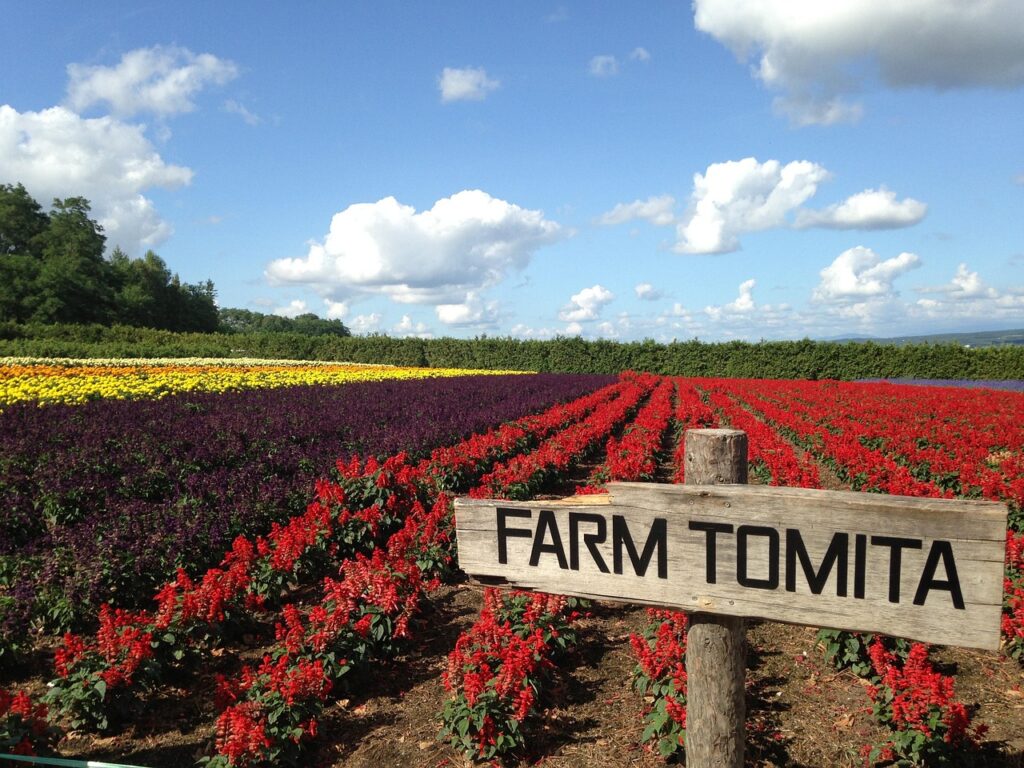
When you think of Hokkaido in summer, the lavender fields of Furano likely come to mind. At "Farm Tomita," typically from mid to late July, a purple carpet unfurls, and just being enveloped in its rich fragrance is healing. Don't miss the "Irodori Field," where not only lavender but also colorful flowers like poppies and gypsophila bloom profusely. The farm also has shops магнит selling lavender soft-serve ice cream and original goods, offering a delight for all five senses.
Meanwhile, "Shikisai-no-Oka" in Biei Town features dozens of flower varieties planted in strips across its vast grounds, creating a beautiful, rainbow-like striped pattern. Riding the tractor bus "Norokko-go" around the park allows you to easily enjoy the magnificent views against the backdrop of the Tokachi mountain range. An alpaca ranch is also on-site, where you can enjoy interacting with cute animals. Both spots are incredibly photogenic. With a camera in hand, fully enjoy Hokkaido's grand-scale floral vistas.
1-1-2. The Patchwork Road and the Mystique of the Blue Pond
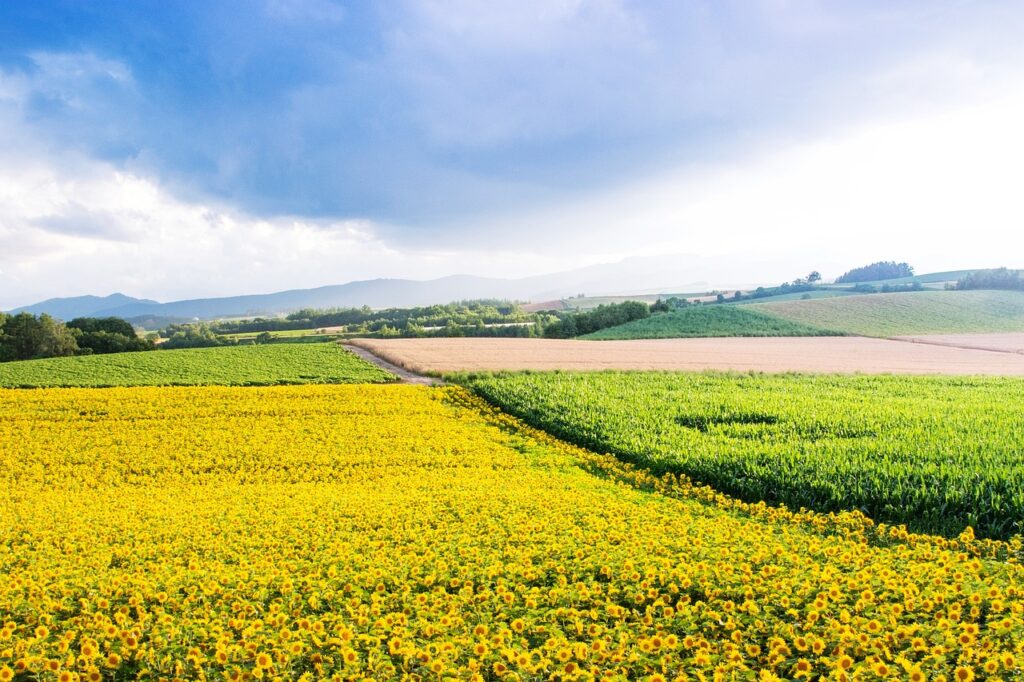
In the Biei hills, fields planted with various crops spread out like a patchwork, known as the "Patchwork Road." Symbolic trees like the "Ken and Mary Tree" and "Seven Stars Tree," famous from commercials and posters, dot the landscape, offering picturesque scenes at every turn. Renting a bicycle and leisurely exploring the area is highly recommended.
Feel the breeze and savor the beauty of the fields, which change color with each season. More recently, the "Blue Pond" (Aoiike) has garnered attention. True to its name, the water surface shines a mystical cobalt blue, with witheredカラマツ (Japanese Larch) trees creating a fantastical atmosphere.
This blue color is said to be created when water containing aluminum from the nearby Shirohige Falls flows in and mixes with the Biei River water, causing colloidal particles to reflect sunlight. The hue of blue changes with the season, weather, and time of day, adding to its charm. It's a mystical spot that shows different expressions each time you visit, whether in the early morning silence, amidst fresh greenery, autumn foliage, or a snowy landscape.
1-2. Shiretoko National Park: Encounters with Primeval Forests and Wildlife in a World Natural Heritage Site
1-2-1. Strolling Around the Shiretoko Five Lakes and Furepe Waterfall
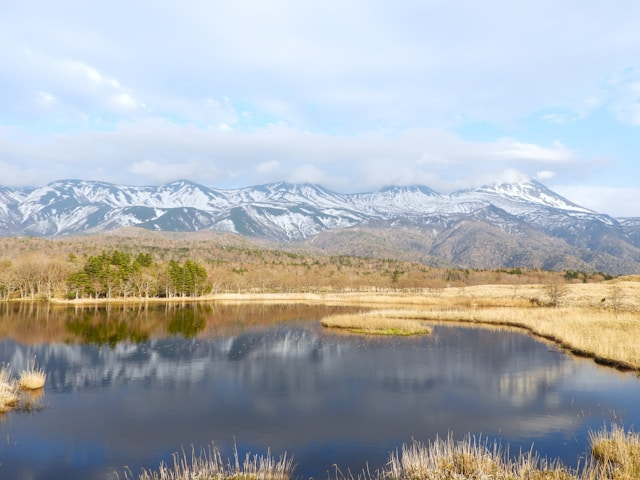
Shiretoko National Park, a registered World Natural Heritage site, is a precious place where untouched nature remains. Among its representative scenic spots are the "Shiretoko Five Lakes." These five beautiful lakes, surrounded by primeval forest, reflect the Shiretoko mountain range on their surfaces, enveloped in a serene and mystical atmosphere.
Although access may be restricted during brown bear activity periods, an elevated wooden boardwalk is maintained, allowing safe strolls while viewing the lakes, surrounding nature, and the distant Shiretoko mountains. If you're lucky, you might encounter wild animals like Ezo deer or red foxes. Also, don't miss "Furepe Waterfall," which cascades from a cliff into the Sea of Okhotsk. Its name means "red water" in Ainu, reportedly because it stains the rock face as it falls.
It's also affectionately known as "Otome no Namida" (Maiden's Tears) due to its small water volume. The observatory offers a powerful view of the cliffs and the vast Sea of Okhotsk. In winter, you can visit on snowshoes, experiencing the beauty of nature in every season.
1-2-2. Adventure on a Cruise Ship to Spot Brown Bears and Dolphins
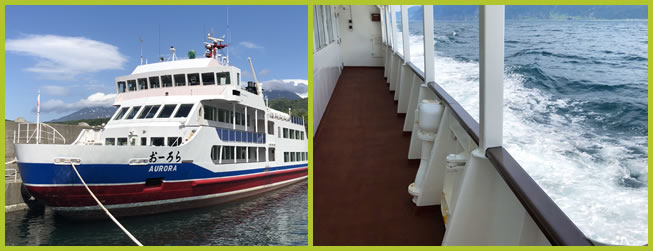
(Image source: Taken from the official websiteおーろら)
To fully enjoy Shiretoko's magnificent nature from the sea, a sightseeing cruise is highly recommended. Departing from Utoro Port, these cruises navigate along a coastline of sheer cliffs, peculiar rock formations, and waterfalls.
The biggest attraction of this cruise is the high probability of observing brown bears living in areas inaccessible from land. From the safety of the boat, you might see mother bears with cubs or solitary bears roaming the coast in their natural habitat. You can also expect encounters with various wild animals such as dolphins, whales, and rare sea birds like Steller's sea eagles and white-tailed eagles.
Several courses are available, varying in duration and destination, with long courses heading towards Cape Shiretoko offering even more secluded and breathtaking scenery. Listening to the experienced captain's guide while approaching the core of this World Natural Heritage site will undoubtedly create unforgettable memories. Bringing binoculars will enhance the experience. It's advisable to check departure times and reservation status in advance.
1-3. Night View from Mount Hakodate: A Breathtaking Experience of One of the World's Top Three Night Views
1-3-1. Access by Ropeway and the Charm of the Observatory
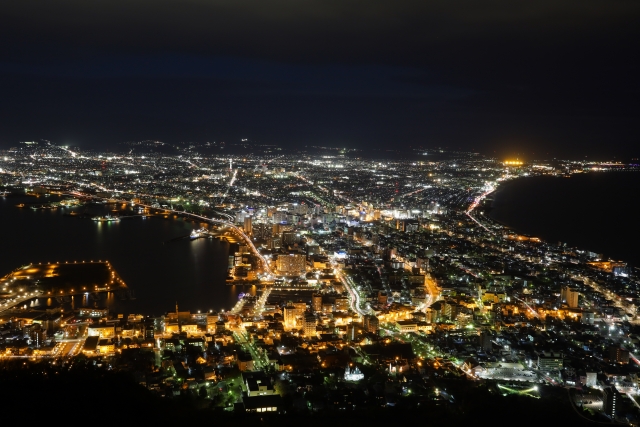
Praised as a "million-dollar night view" and counted among the world's top three alongside Naples and Hong Kong, the night view from Mount Hakodate is a highlight of any Hokkaido trip.
The summit, at an elevation of 334 meters, is typically reached by a ropeway from the foot of the mountain in about 3 minutes. From the gondola's large windows, you'll see the city lights gradually spreading below and the unique landform sandwiched between the Tsugaru Strait and Hakodate Bay, heightening your anticipation.
The summit observatory has multiple levels, with indoor viewing spaces and a rooftop observatory, allowing you to enjoy panoramic views regardless of time or weather. The twilight time after sunset is particularly spectacular, as the sky changes color and the city lights begin to twinkle, creating a scene of almost indescribable beauty.
The observatory also features restaurants and souvenir shops, where you can dine while gazing at the night view or look for Hakodate-exclusive goods. The air is clearer in winter, said to offer an even more beautiful night view.
1-3-2. Recommended Times and Seasons to Better Enjoy the Night View
To make the most of the Mount Hakodate night view, choosing the right time of day and season is key.
The most popular time is a magic hour, from sunset to nightfall. The moment the sky transitions from crimson to deep blue and the city lights begin to sparkle like jewels is exceptional. It's recommended to arrive at the summit 30 minutes to an hour before sunset.
As for the season, beautiful night views can be seen year-round, but from autumn to winter, when the air is particularly clear, you can expect a sharper view extending further into the distance. In winter, snow reflects the city lights, enhancing the fantastical atmosphere.
However, winter sunsets are early, and cold-weather gear is essential. Summer offers longer daylight hours, making it easier to combine night view appreciation with other sightseeing activities. To avoid crowds, consider aiming for a later time on weekdays. Also, the night view from summer to autumn, when the lights of squid fishing boats (isaribi) can be seen, has its own unique charm.
2. A Feast for the Senses! Exquisite Gourmet Foods You Must Try in Hokkaido
2-1. Fresh Seafood: Savoring Sushi and Kaisendon (Seafood Bowls) at the Market
2-1-1. The Vibrancy and Flavors of Sapporo Central Wholesale Market's Curb Market
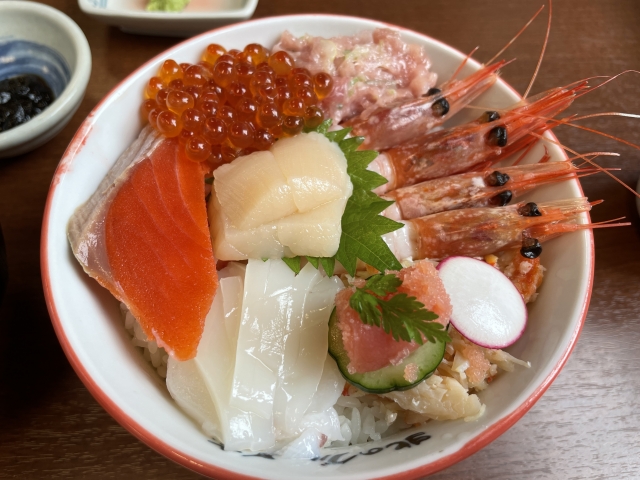
When it comes to Hokkaido's culinary treasures, fresh seafood is paramount. The "Curb Market" (Jogai Ichiba), adjacent to the Sapporo Central Wholesale Market, also known as Sapporo's kitchen, is a hugely popular spot for tourists.
Bustling with energy from early morning, it's packed with freshly caught fish and shellfish from Hokkaido's coastal waters, such as crab, scallops, sea urchin, and salmon roe. Amidst the lively calls of vendors, enjoying samples while picking out souvenirs is a unique market pleasure. And the greatest joy of all is the exquisite sushi and kaisendon available right in the market.
Nigiri sushi made with freshly caught ingredients melts in your mouth. Kaisendon, lavishly topped with colorful seafood, is visually stunning and truly a condensed taste of Hokkaido. Many market eateries open early, making it a great breakfast destination. Enjoy Hokkaido's marine bounty to your heart's content with fresh ingredients at reasonable prices.
2-1-2. Fresh Squid Sashimi and Crab at Hakodate Morning Market

The "Hakodate Morning Market" (Hakodate Asaichi) is the quintessential gourmet spot in the port city of Hakodate. Located right next to JR Hakodate Station, it hosts around 250 stalls selling fresh seafood, agricultural products, and dried goods. Hakodate's specialty, squid, is a must-try.
Many eateries in the morning market serve incredibly fresh squid sashimi, so translucent it's almost clear. Its firm texture and delicate sweetness are unforgettable. The "Live Squid Fishing Pond," where you can catch your own squid and have it prepared on the spot, is also a popular attraction for all ages. Crab is another of Hokkaido's representative delicacies. Various types of crab, including king crab, snow crab, and horsehair crab, are on display, and you can have them boiled on the spot or arrange for shipping.
There are also many restaurants serving kaisendon and sushi, and part of the fun is deciding which one to try. Wake up early, explore the vibrant morning market, and indulge in Hakodate's unique seafood offerings.
2-2. Local Ramen: A Taste Comparison of Sapporo Miso, Asahikawa Shoyu, and Hakodate Shio
2-2-1. Sapporo Ramen Yokocho and Characteristics of Popular Shops
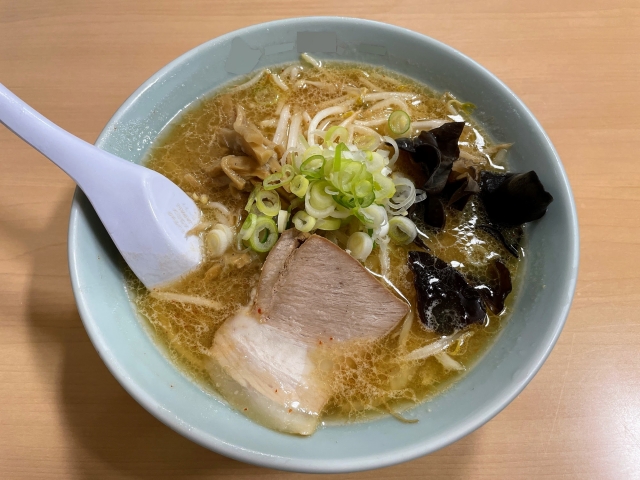
The quintessential Hokkaido ramen is undoubtedly Sapporo's miso ramen. Its rich miso broth, typically pork-bone based, clings well to medium-thick, curly noodles, and is often topped with stir-fried vegetables, minced meat, corn, and butter.
The "Ganso Sapporo Ramen Yokocho" (Original Sapporo Ramen Alley) and "Shin Ramen Yokocho" (New Ramen Alley), said to be its birthplace, are lined with unique miso ramen shops, bustling daily with tourists and locals alike. A layer of lard often covers the soup's surface, a characteristic of Sapporo ramen, keeping it piping hot until the last bite.
Popular shops offer their own twists on the traditional flavor, often with long queues. Each shop has its ownこだわり (kodawari - special commitment) regarding miso types and blends, dashi preparation, and noodle thickness and firmness, making a ramen crawl a fun experience. A hot bowl of miso ramen is especially comforting in cold winters, but it's loved year-round as Hokkaido's soul food.
2-2-2. The Charm of Asahikawa and Hakodate Ramen and Hidden Gems
Alongside Sapporo miso ramen, Asahikawa's shoyu (soy sauce) ramen and Hakodate's shio (salt) ramen are hailed as Hokkaido's three great ramens.

Asahikawa ramen features a shoyu-based double soup, combining pork bone or chicken stock with seafood stock. A layer of lard on the soup's surface helps retain heat in the frigid Asahikawa climate, keeping it hot to the end. Low-hydration, medium-thin curly noodles are common, absorbing the soup well. The city has numerous ramen shops, including hidden gems beloved by locals.

On the other hand, Hakodate ramen is characterized by its relatively light, clear, pork-bone based salt soup. Thinner, straight noodles are often used, offering a simple yet profound flavor. Toppings are also simple—char siu, menma, and green onions—enhancing the soup's inherent umami. Popular shops can be found around the Hakodate Morning Market and Goryokaku area, perfect for a stop during sightseeing. Explore the distinct ramen cultures rooted in each city.
2-3. Genghis Khan (Jingisukan): Savoring Hokkaido's Soul Food
2-3-1. Differences Between Fresh and Frozen Lamb, and How to Grill It Deliciously
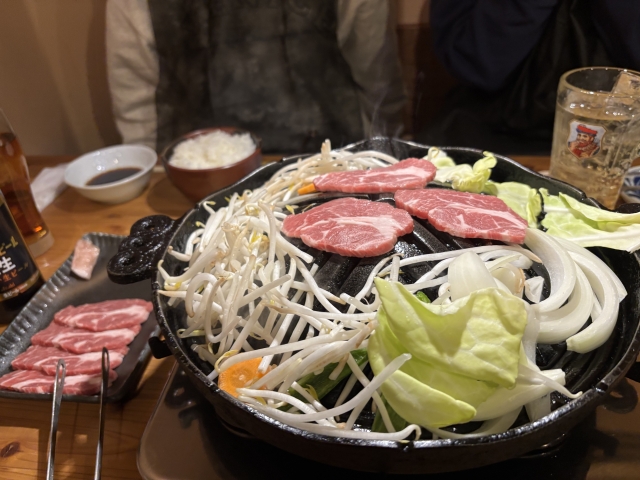 Genghis Khan (Jingisukan) is a signature Hokkaido dish where lamb and vegetables are grilled on a distinctive dome-shaped skillet. The mutton used is mainly "lamb" (less than one year old) and "mutton" (two years or older), with lamb being less gamy and more tender. Furthermore, lamb meat can be "nama-ramu" (fresh lamb), never frozen, or meat that has been frozen and then thawed. Fresh lamb is juicier and more flavorful, often treated as a premium product.
Genghis Khan (Jingisukan) is a signature Hokkaido dish where lamb and vegetables are grilled on a distinctive dome-shaped skillet. The mutton used is mainly "lamb" (less than one year old) and "mutton" (two years or older), with lamb being less gamy and more tender. Furthermore, lamb meat can be "nama-ramu" (fresh lamb), never frozen, or meat that has been frozen and then thawed. Fresh lamb is juicier and more flavorful, often treated as a premium product.
The key to delicious grilling is to first cook the meat on the raised center of the skillet, allowing its juices to flow down and cook the vegetables (onions, bean sprouts, bell peppers, pumpkin, etc.) arranged around the edges. This way, the meat's umami seeps into the vegetables, making them even tastier. It's best not to overcook the meat; medium-rare is recommended. For Hokkaido locals, Genghis Khan is a common meal, enjoyed at home, in beer gardens, and at specialty restaurants.
2-3-2. Recommended Genghis Khan Specialty Restaurants and the Secret of Their Sauces
Hokkaido boasts numerous Genghis Khan specialty restaurants, each offering its own carefully selected meat and signature sauce.
Sapporo city alone has a wide variety, from long-established famous restaurants to newer, modern-style establishments. Choosing a locally popular spot or visiting a well-known tourist-friendly restaurant are both good options. The "tare" (sauce) significantly influences the taste of Genghis Khan. Many are homemade, soy sauce-based, blended with fruits, vegetables, and spices, each shop guarding its secret recipe.
There are two main styles: "ajitsuke Genghis Khan," where the meat is marinated in sauce before grilling, and "atozuke Genghis Khan," where grilled meat is dipped into sauce. Both are common in Hokkaido. Marinated meat is deeply flavored and pairs well with rice. The dip-style allows you to enjoy the meat's natural flavor while also savoring the sauce. Some popular restaurants sell their sauces to take home, making for a great souvenir. Find your favorite Genghis Khan restaurant based on atmosphere, meat type, and sauce preference.
3. Exciting Experiences! Activities Unique to Hokkaido
3-1. Winter Wonders: Skiing, Snowboarding, and Ice Floe Walking
3-1-1. Enjoying Powder Snow in Niseko and Furano
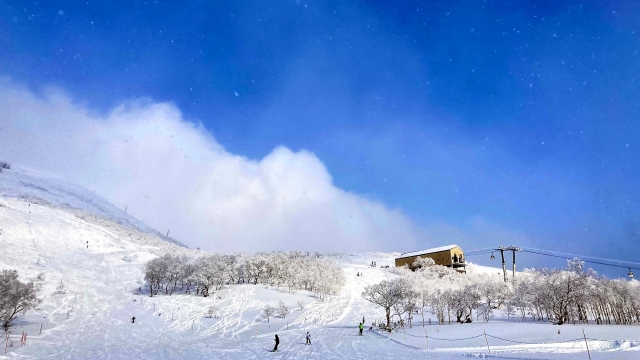
Hokkaido is a paradise for winter sports enthusiasts, famed for its "JAPOW" – Japanese powder snow. Niseko, one of the world's most renowned ski resorts, attracts skiers and snowboarders globally with its incredibly light and abundant powder.
With multiple interconnected ski areas, it offers diverse terrains for all levels, from gentle slopes for beginners to challenging backcountry routes for experts. Furano Ski Resort is another major destination, known for its high-quality snow and long, scenic runs, having hosted FIS World Cup events. Beyond the slopes, both areas offer a vibrant après-ski scene with international cuisine and cozy lodges. For those seeking an unparalleled snow experience, Hokkaido's ski resorts deliver.
Remember to dress in layers and protect yourself from the cold to fully enjoy the exhilarating descents through pristine powder.
3-1-2. The Thrill of Drift Ice Experiences in Abashiri and Monbetsu
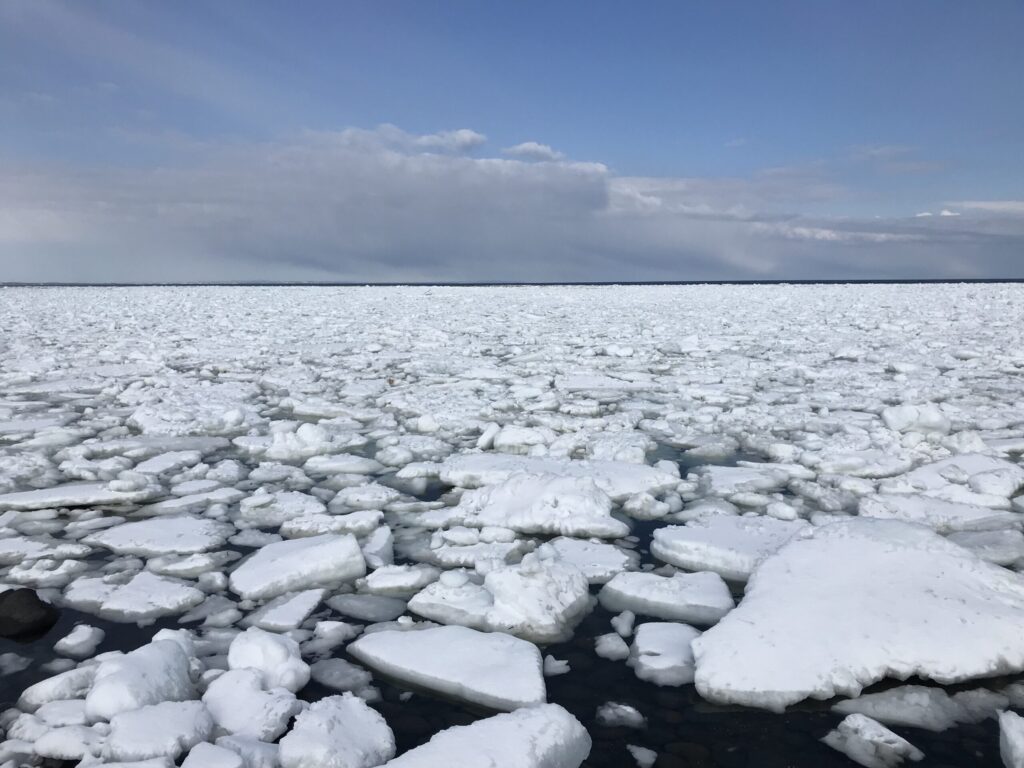
A truly unique winter phenomenon in Hokkaido is the arrival of drift ice (ryuhyo) in the Sea of Okhotsk. From late January to March, vast sheets of ice from the Amur River in Russia drift south, blanketing the coastlines of cities like Abashiri and Monbetsu.
Several ways exist to experience this natural wonder. Icebreaker cruises, such as the "Aurora" in Abashiri and "Garinko-go II" in Monbetsu, carve paths through the thick ice, offering close-up views of the dynamic ice floes and the wildlife that inhabits this environment, like seals and sea eagles. For a more adventurous experience, "drift ice walking" allows you to don a dry suit and walk, crawl, or even float amongst the ice under the guidance of a professional.
It's an extraordinary opportunity to connect with a harsh yet beautiful aspect of nature. Observing the sunset over the drift ice is also an incredibly moving sight.
3-2. Summer Fun: Rafting, Canoeing, and Whale Watching
3-2-1. Enjoying Water Sports in the Clear Streams of Furano and Niseko

(Image source: Taken from the official website Minamifurano rafting tour)
Summer in Hokkaido unlocks a plethora of outdoor activities, with its clear rivers and lush green landscapes providing the perfect playground. In areas like Furano and Niseko, rafting down pristine rivers like the Sorachi or Shiribetsu offers an exhilarating experience. Guided tours cater to various skill levels, making it a fun activity for families and thrill-seekers alike.
The rapids provide excitement, while calmer stretches allow you to soak in the stunning natural scenery. Canoeing and kayaking offer a more tranquil way to explore Hokkaido's waterways. Paddle along serene lakes such as Lake Shikotsu or Lake Toya, or meander down gentle rivers, surrounded by forests and wildlife.
Many operators provide equipment rental and guided tours, ensuring a safe and enjoyable experience. These water sports are a fantastic way to cool off during the warmer months and appreciate Hokkaido's rich natural environment from a different perspective.
3-2-2. Thrilling Whale and Dolphin Encounters off the Coasts of Shiretoko and Muroran

(Image source: Taken from the official website Shiretoko Nature Cruise)
Hokkaido's surrounding seas are rich in marine life, offering fantastic opportunities for whale and dolphin watching, particularly from spring to autumn. Off the coast of the Shiretoko Peninsula, a World Natural Heritage site, you might encounter sperm whales, minke whales, orcas, and various dolphin species.The nutrient-rich waters attract these magnificent creatures, and boat tours provide a chance to witness them in their natural habitat.
Further south, the waters off Muroran are another prime location, especially known for sightings of minke whales and Dall's porpoises. Experienced guides on these tours share their knowledge about marine life and help spot the animals. Seeing a whale breach or a pod of dolphins playfully swimming alongside the boat is an awe-inspiring experience that connects you deeply with the marine world. Remember to bring warm clothing, even in summer, as it can get chilly out on the water.
3-3. Animal Encounters: Asahiyama Zoo and Farm Experiences
3-3-1. The Charm and Highlights of Asahiyama Zoo's Behavioral Exhibits
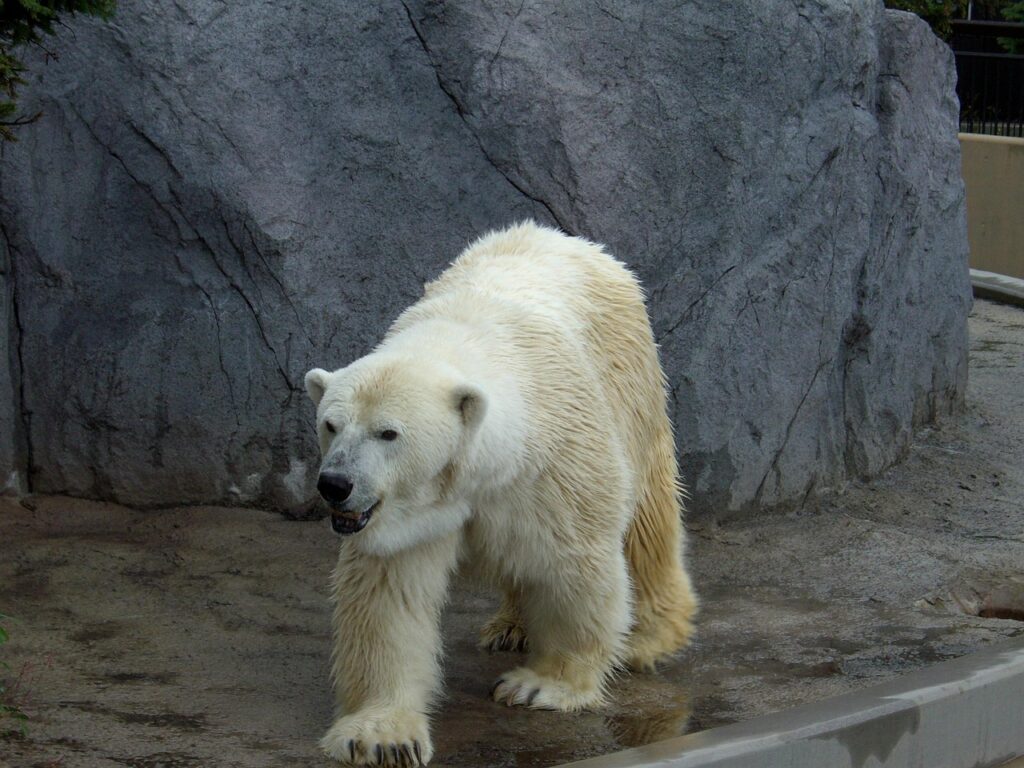
Asahiyama Zoo in Asahikawa is one of Japan's most popular and innovative zoos, renowned for its "behavioral exhibits" (kodo tenji). These unique enclosures are designed to showcase animals' natural behaviors and abilities. For example, you can see polar bears diving мощно into a large pool from an underwater tunnel, spotted seals swimming through a vertical pipe, and orangutans brachiating on ropes high above. The penguin parade in winter, where penguins waddle through the zoo grounds, is a particularly famous attraction.
The zoo aims to provide an environment where animals can live as naturally as possible, and visitors can learn about their ecology and importance. It’s an engaging and educational experience for all ages, offering insights into the animal kingdom that go beyond simply viewing animals in cages. Allow ample time to explore, as there are many fascinating exhibits to see.
3-3-2. Dairy Farming Experiences and Interacting with Animals on Vast Ranches
Hokkaido is Japan's leading dairy region, and its vast landscapes are dotted with numerous farms and ranches offering interactive experiences. Visiting a ranch provides a wonderful opportunity to get up close with farm animals and learn about agriculture.
Many ranches offer hands-on activities like cow milking, butter making, or horseback riding. You can pet and feed animals such as sheep, goats, and rabbits, which is especially enjoyable for children. Some farms have restaurants or cafes serving fresh dairy products like milk, ice cream, and cheese made on-site.
The Tokachi region, in particular, is famous for its expansive pastoral scenery and numerous "experience farms." These farm stays or visits are not only fun but also educational, offering a glimpse into rural life and the importance of farming in Hokkaido. It's a refreshing escape from city life and a chance to connect with nature and animals in a meaningful way.
4. Encounter History and Culture! Charming City Sightseeing and Hot Springs
4-1. Sapporo: Exploring the Clock Tower, Odori Park, and Shiroi Koibito Park
4-1-1. Classic Tourist Route Around Sapporo's Symbols
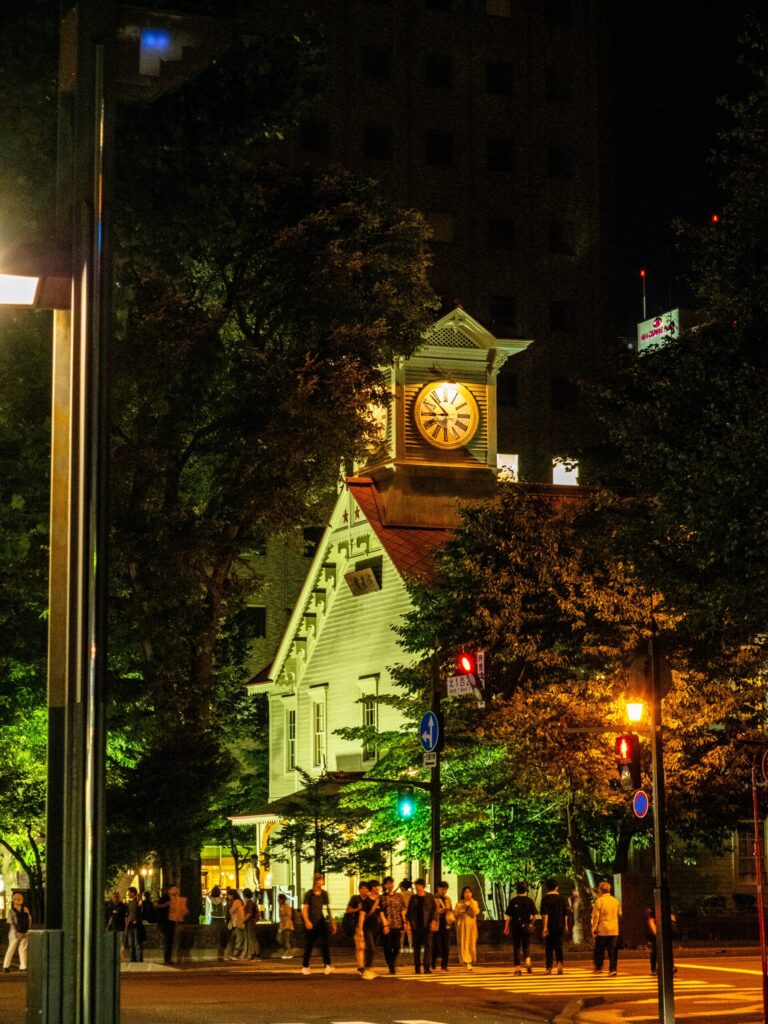
Sapporo, Hokkaido's vibrant capital, offers a blend of urban sophistication and natural beauty. A classic sightseeing route typically includes its most iconic landmarks. The Sapporo Clock Tower (Tokeidai), a wooden structure built in 1878, is a symbol of the city's pioneering history and emits a charming, nostalgic chime. Nearby, Odori Park, a verdant oasis stretching 1.5 kilometers through the city center, hosts seasonal events like the Sapporo Snow Festival in winter and the Lilac Festival in spring.
It's a perfect spot for a leisurely stroll or a relaxing break. The Former Hokkaido Government Office Building, affectionately known as "Akarenga Chosha" (Red Brick Office), is another historical gem with its impressive American neo-baroque architecture. These spots offer a glimpse into Sapporo's development and are easily accessible, forming the core of any city tour. Don't forget to explore the Sapporo Beer Garden and Museum for a taste of local brew and history.
4-1-2. How to Enjoy Shiroi Koibito Park and Factory Tour
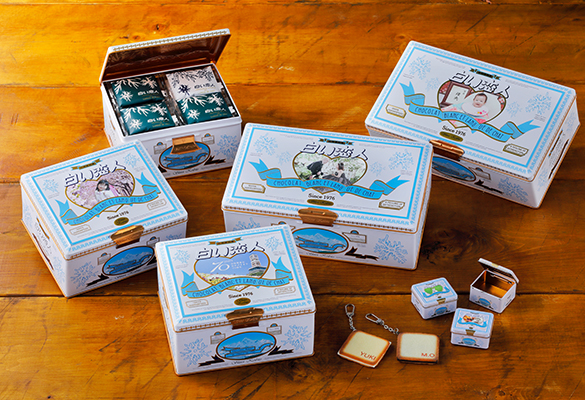
(Image source: Taken from the official website Shiroi Koibito Park)
Shiroi Koibito Park is a delightful confectionery theme park opShiroi Koibito Parkerated by Ishiya, the company famous for Hokkaido's iconic "Shiroi Koibito" cookies (white chocolate sandwiched between lang-de-chat biscuits). Modeled after a medieval English town, the park is a whimsical world of sweets, flowers, and charming architecture.
A highlight is the factory tour, where you can observe the cookie-making process through large windows. You can also try your hand at decorating your own giant Shiroi Koibito cookie in a hands-on workshop (reservations often recommended).
The park features a Chocolate Lounge serving original desserts, a Tudor-style house with antique toy collections, and beautiful rose gardens that bloom in summer. At night, the illuminations create a romantic atmosphere. It's a fun-filled destination for families, couples, and anyone with a sweet tooth, offering more than just a taste of Hokkaido's most famous souvenir.
4-2. Otaru: Strolling Along the Canal and Glasswork Townscape
4-2-1. Otaru Canal Cruise and Historic Buildings
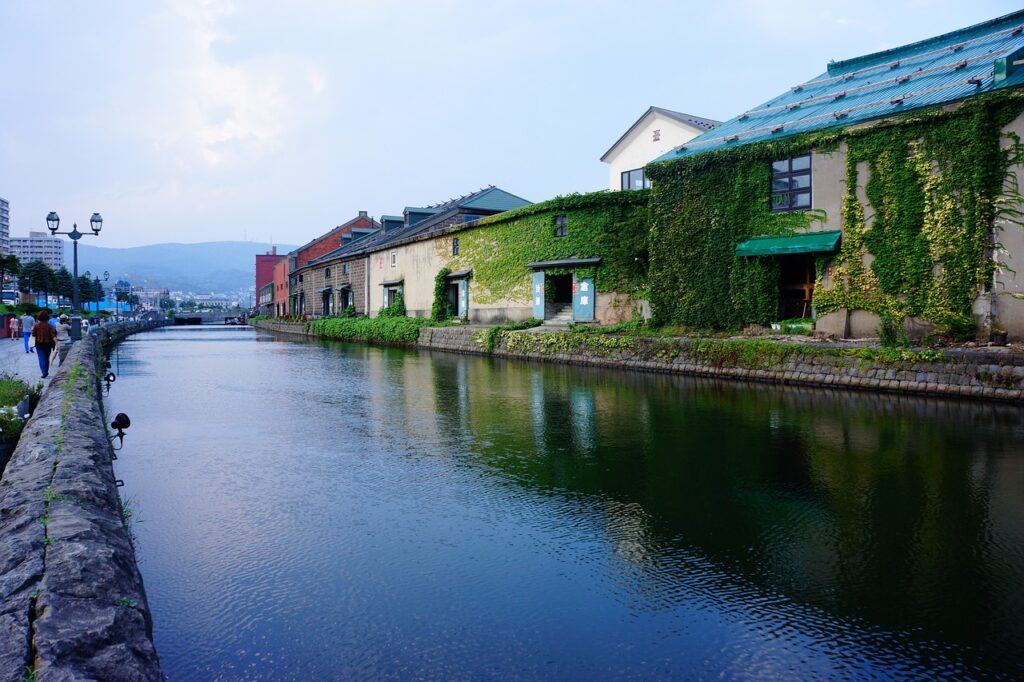
Otaru, a picturesque port city near Sapporo, exudes a nostalgic charm with its beautifully preserved canal and historic buildings. The Otaru Canal, once a bustling hub for unloading cargo from ships, is now a popular tourist spot lined with stone warehouses that have been converted into restaurants, shops, and museums.
A leisurely stroll along the canal, especially in the evening when gas lamps illuminate the walkway, is a romantic experience. Otaru Canal cruises offer a different perspective, allowing you to admire the historic architecture from the water.
Beyond the canal, the Sakaimachi Street is famous for its glassware shops, music box stores, and sweet shops housed in impressive stone or wooden merchant buildings from the late 19th and early 20th centuries. The Bank of Japan Otaru Museum, formerly a branch of the central bank, is another architectural highlight, showcasing the city's past prosperity.
4-2-2. Shopping at Kitaichi Glass and Otaru Music Box Museum
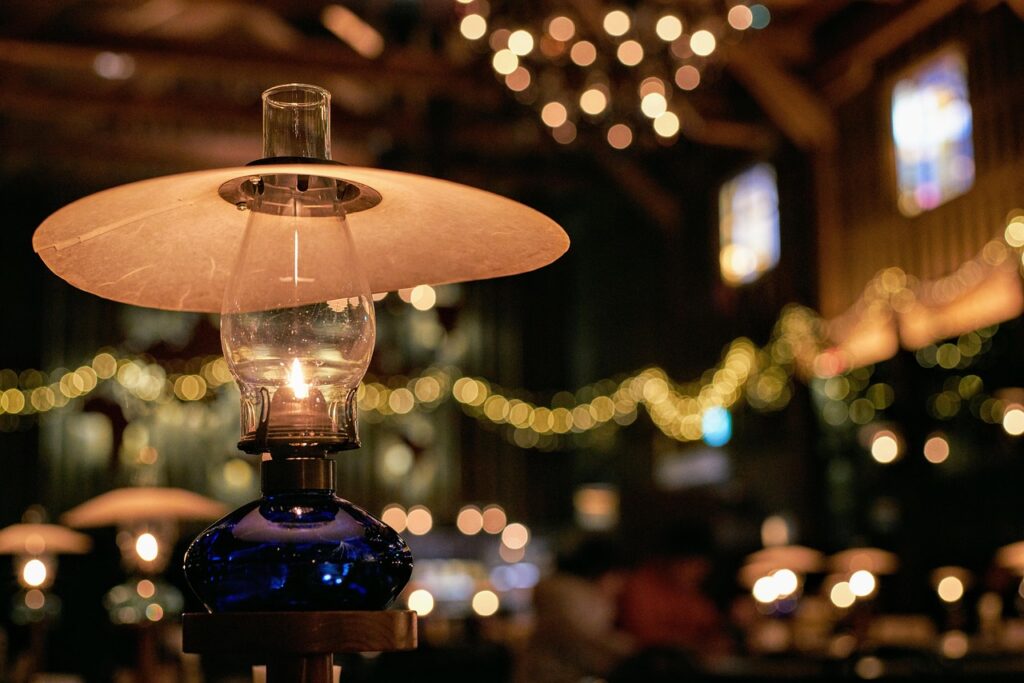
Sakaimachi Street in Otaru is a shopper's paradise, particularly for those interested in local crafts. Kitaichi Glass is one of the most renowned names, with several outlets showcasing a dazzling array of handmade glassware, from practical tableware to intricate art pieces.
You can watch glassblowing demonstrations at some of their workshops. The Otaru Music Box Museum is another iconic attraction, housed in a beautiful historic building. It features an astonishing collection of music boxes from around the world, with thousands of melodies and designs. The main hall's steam clock, a gift from Vancouver, chimes melodically every 15 minutes.
You can even create your own custom music box here. These establishments, along with numerous confectioneries selling local specialties like LeTAO cheesecake, make Sakaimachi Street a delightful place to wander, browse, and find unique souvenirs that capture the essence of Otaru's artistic and historical heritage.
4-3. Noboribetsu and Jozankei: Healing in Famous Hot Springs
4-3-1. Noboribetsu Jigokudani (Hell Valley) and Diverse Hot Spring Ryokans

Noboribetsu Onsen is one of Hokkaido's most famous and largest hot spring resorts, known for its abundant, high-quality thermal waters with multiple mineral compositions.
The source of these waters is Jigokudani (Hell Valley), a dramatic, geothermally active crater with steaming vents, sulfurous streams, and a barren, otherworldly landscape. Walking trails allow visitors to explore this fascinating area and witness the raw power of nature.
The town itself is home to numerous ryokans (Japanese inns) and hotels, many offering a variety of baths with different mineral properties, such as sulfur, salt, and iron, each believed to have distinct health benefits. Some ryokans feature large, open-air baths (rotenburo) where you can soak while enjoying the natural surroundings. Noboribetsu is also known for its demon (oni) statues scattered throughout the town, adding a unique cultural element to the onsen experience. It's a perfect place to relax and rejuvenate.
4-3-2. The Charms of Jozankei Onsen, Sapporo's "Inner Parlor," and Footbaths
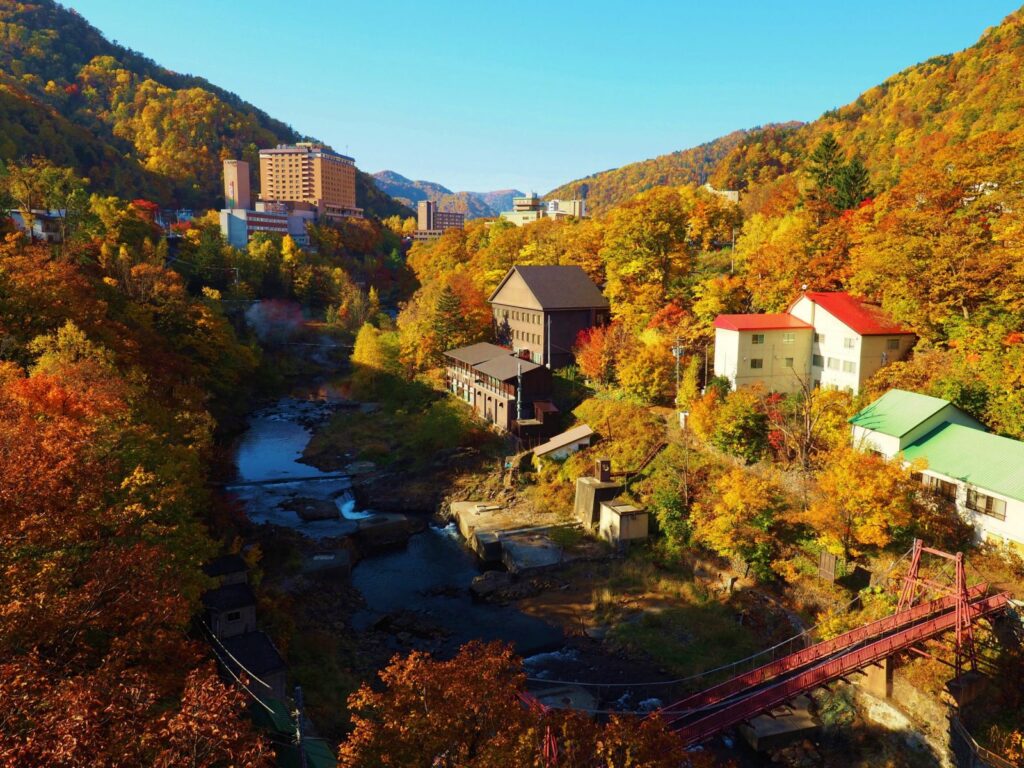
Jozankei Onsen, nestled in a lush valley just an hour's drive from Sapporo, is affectionately known as "Sapporo's inner parlor" (Sapporo no Okuzashiki). This historic hot spring town, discovered in 1866, offers a tranquil escape with its beautiful natural scenery, especially stunning during the autumn foliage season.
The sodium chloride spring water is clear and gentle on the skin, believed to be effective for various ailments. Jozankei offers a range of accommodations, from traditional ryokans to modern hotels, many with riverside rotenburo. Strolling through the town, you'll find several free footbaths (ashiyu) where you can気軽に (kigaruni - easily/casually) enjoy the therapeutic waters.
The Kappa Daio (Great Kappa King) statue is a local landmark, as kappas (mythical water sprites) are the town's mascots. With its easy accessibility from Sapporo and serene atmosphere, Jozankei is an ideal destination for a day trip or an overnight stay to experience Japanese onsen culture.
5. Perfect Your Itinerary! Useful Information for Your Hokkaido Trip
5-1. Recommended Travel Seasons and Clothing Tips
5-1-1. Charms of Each Season and Event Calendar
Hokkaido offers distinct charms throughout the year, making any season a good time to visit, depending on your interests.
- Spring (April-May): Cherry blossoms and shibazakura (moss phlox) bloom, and the weather becomes milder, suitable for city walks and drives. The Sapporo Lilac Festival in May is a highlight.
- Summer (June-August): This is peak season for flower viewing (lavender in Furano, etc.) and outdoor activities like hiking and rafting. The weather is generally pleasant, though sometimes hot. YOSAKOI Soran Festival (Sapporo, June) and Otaru Tide Festival (July) are major events.
- Autumn (September-October): Stunning autumn foliage can be seen in areas like Daisetsuzan National Park and Jozankei. It's also harvest season, with abundant fresh produce and seafood. Food festivals are common.
- Winter (November-March): Famous for powder snow, attracting skiers and snowboarders. The Sapporo Snow Festival (February) is world-renowned. Drift ice viewing in eastern Hokkaido (Jan-Mar) is a unique experience.
Checking local event calendars before your trip can add unique experiences to your itinerary. Be aware that weather can be unpredictable, especially in transitional seasons.
5-1-2. Climate for Each Season and Appropriate Clothing Advice
Hokkaido's climate varies significantly by season, requiring careful packing.
- Spring (April-May): Temperatures range from cool to mild (5-15°C / 41-59°F). Layers are essential. A light jacket, sweater, and long-sleeved shirts are recommended. Evenings can still be chilly.
- Summer (June-August): Daytime temperatures are generally pleasant (20-26°C / 68-79°F), but can exceed 30°C (86°F) in some areas. Light clothing like t-shirts and shorts are fine, but bring a light jacket or cardigan for cooler evenings or mountainous areas. Sun protection is crucial.
- Autumn (September-October): Temperatures gradually drop (10-18°C / 50-64°F). Sweaters, fleece jackets, and windbreakers are useful. By late October, you might need a warmer coat, especially in northern or eastern Hokkaido.
- Winter (November-March): It's very cold, with temperatures often below freezing (-5 to -20°C / 23 to -4°F or lower). Heavy winter coats, thermal underwear, hats, gloves, scarves, and waterproof, non-slip winter boots are essential. Dressing in layers helps trap heat. For indoor areas, which are well-heated, you'll want to be able to remove outer layers.
5-2. Efficient Transportation within Hokkaido and Model Itinerary Ideas
5-2-1. Smart Use of Rental Cars, JR Trains, and Buses
Navigating vast Hokkaido requires choosing the right transportation.
- Rental Car: Offers the most flexibility, especially for exploring rural areas, national parks, and scenic routes where public transport is limited. International driving permits are required for many. Winter driving requires caution and experience with snow/ice; ensure your rental has snow tires or 4WD.
- JR Trains: Hokkaido's Japan Railways (JR) network connects major cities like Sapporo, Hakodate, Asahikawa, and Kushiro with comfortable limited express trains. The Hokkaido Rail Pass can be cost-effective for extensive train travel.
- Buses: Intercity buses connect many destinations, sometimes more directly or cheaply than trains. Local buses are useful within cities and for accessing some tourist spots. Sightseeing buses offer convenient tours to popular attractions.
- Air Travel: For long distances between regions (e.g., Sapporo to Eastern Hokkaido), domestic flights can save significant time.
Combining these options is often the most efficient approach. For example, use trains for intercity travel and then rent a car locally or use buses for regional exploration.
5-2-2. Model Itineraries for 3-Day/2-Night and 4-Day/3-Night Trips to Popular Areas
3-Day/2-Night (Central Hokkaido Focus):
* Day 1: Arrive at New Chitose Airport (CTS), head to Sapporo. Explore Sapporo city (Clock Tower, Odori Park, Shiroi Koibito Park). Stay in Sapporo.
* Day 2: Day trip to Otaru (Canal, Sakaimachi Street). Evening in Sapporo (Susukino, Genghis Khan dinner). Stay in Sapporo.
* Day 3: Morning in Sapporo (e.g., Sapporo Beer Garden), or visit an outlet mall near CTS. Depart from CTS.
4-Day/3-Night (Central & Furano/Biei Focus):
* Day 1: Arrive CTS, transfer to Sapporo. City sightseeing. Stay in Sapporo.
* Day 2: Pick up rental car. Drive to Furano/Biei. Visit Farm Tomita, Shikisai-no-Oka, Blue Pond. Stay in Furano or Biei.
* Day 3: Explore more of Biei's Patchwork Road. Optionally, visit Asahiyama Zoo (if time permits, it's a bit of a drive). Drive back towards Sapporo or CTS area. Stay near airport or Sapporo.
* Day 4: Last-minute souvenir shopping. Depart from CTS.
These are just examples. Customize based on your interests (e.g., focusing on nature in Eastern Hokkaido, or history in Hakodate). Given Hokkaido's size, avoid trying to cover too much ground in a short trip.
Conclusion
Summary 1: Hokkaido's Charms Condensed! The Best Trip with "10 Things to Do"
This article has introduced "Top Things to Do" in vast Hokkaido, categorized by grand nature, gourmet food, activities, city sightseeing, hot springs, and useful travel tips.
The breathtaking flower fields and hills of Furano and Biei, the primeval nature of World Natural Heritage site Shiretoko, and the jewel-like night view from Mount Hakodate will deeply move visitors. Furthermore, Hokkaido's unique gourmet offerings like fresh seafood, Genghis Khan, and local ramen are major highlights of any trip. Engaging in activities like skiing or rafting, strolling through the cityscapes of Sapporo and Otaru, and healing your travel fatigue in famous hot springs... Hokkaido is packed with such diverse attractions.
We've also explained seasonal highlights, appropriate attire, and efficient transportation methods, which should surely help in planning your trip. Hokkaido is so profound that one visit isn't enough to experience it all; it reveals new discoveries each time. Use these "Top Things to Do" as a reference to create your original Hokkaido travel plan and make unforgettable, wonderful memories. The enchanting northern land, which will make you want to visit again soon, awaits you.